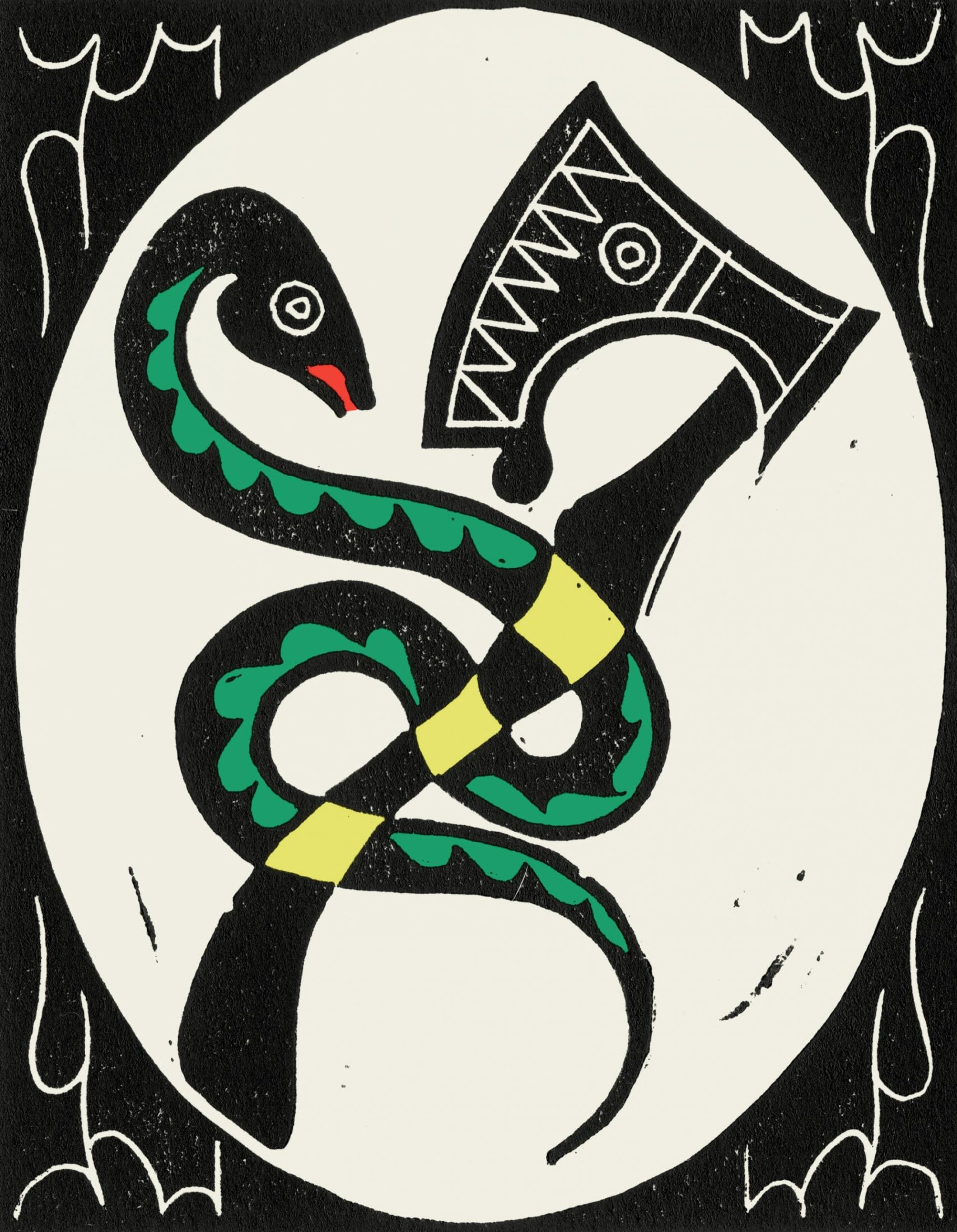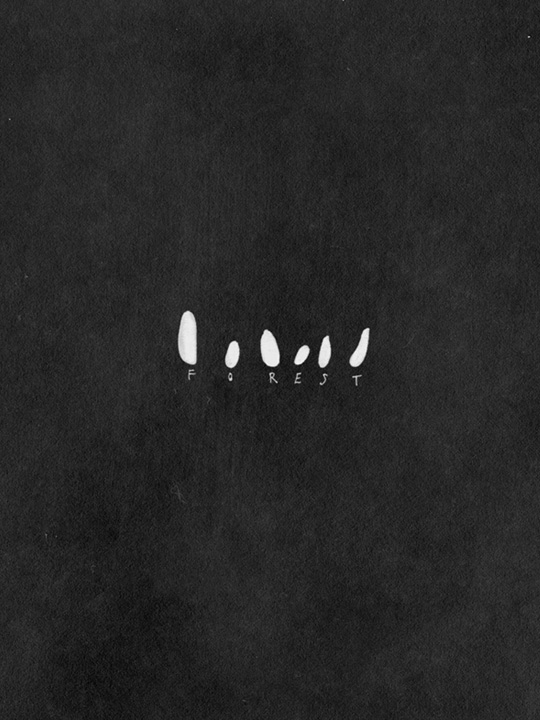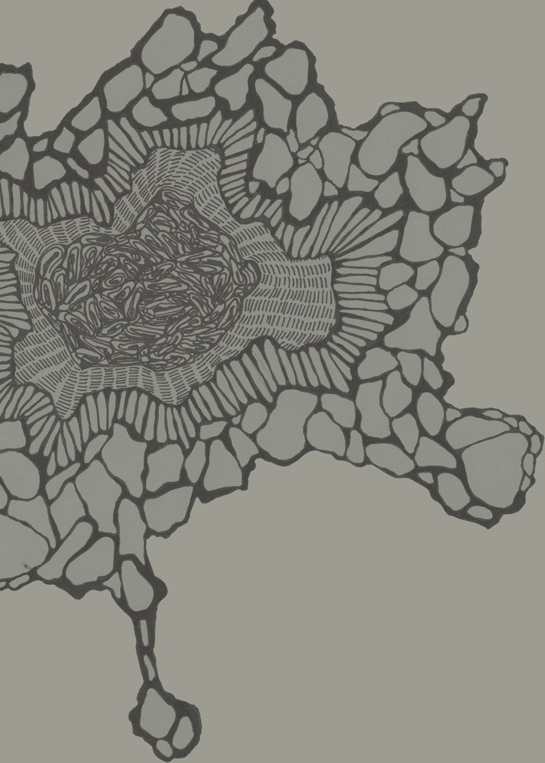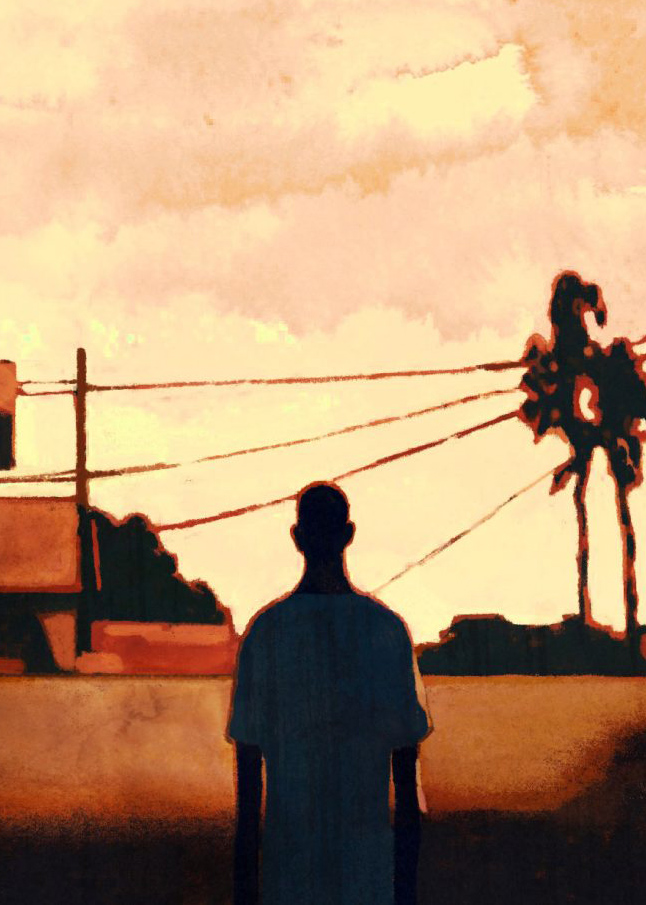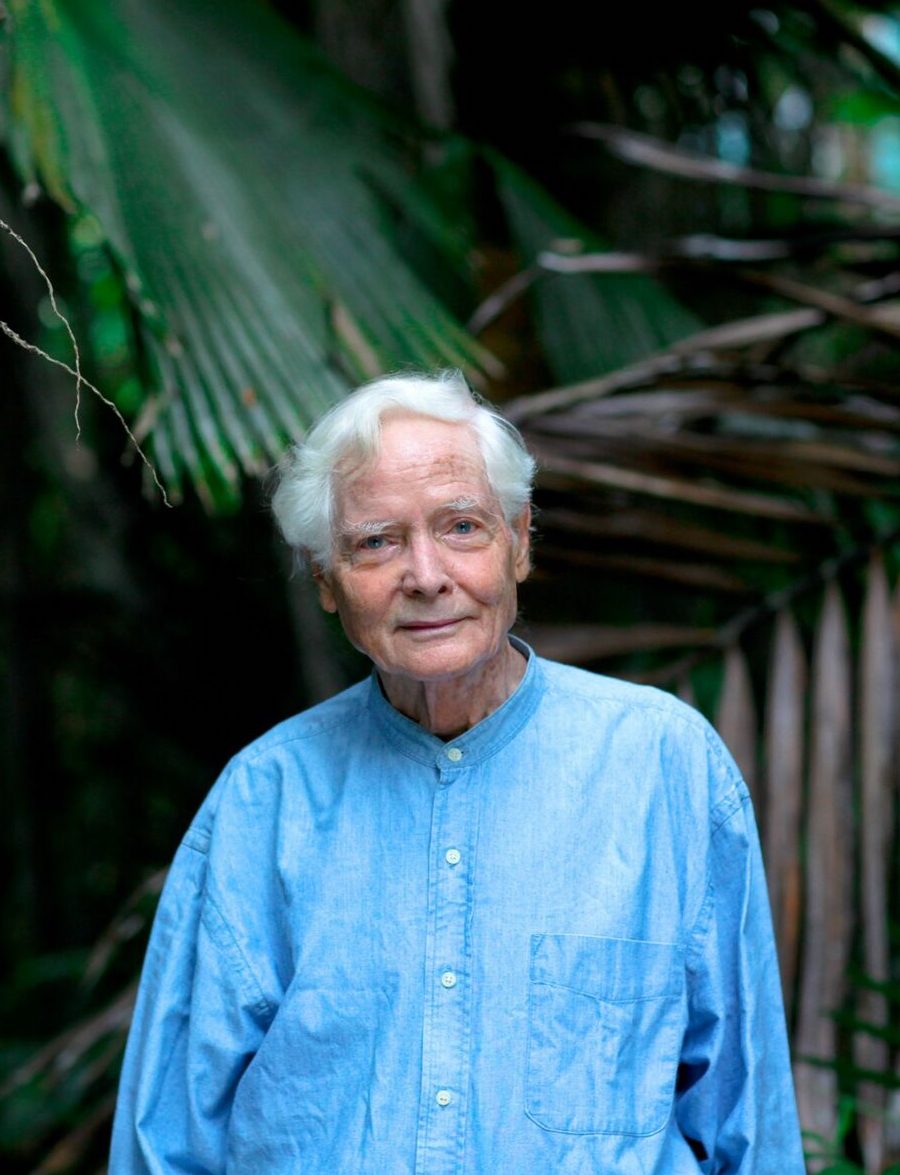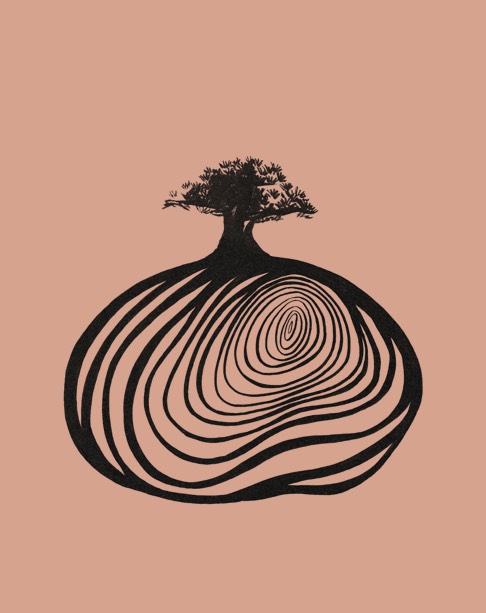
Lauren E. Oakes is an environmental scientist and author who writes about forests, climate, and our complex relationships with nature. Her book In Search of the Canary Tree was one of Science Friday’s Best Science Books of 2018, the Second-Place Winner of the 2019 Rachel Carson Environment Book Award, and a finalist for the National Academies of Sciences, Engineering, and Medicine Communication Award. Her latest book is Treekeepers: The Race for a Forested Future. Lauren has contributed to The New York Times, The Los Angeles Times, National Geographic, Scientific American, Nautilus, and Anthropocene Magazine.
Ecologist Lauren Oakes looks beyond the scientific lens of subject-object while studying the consequences of climate change on a dying community of yellow-cedars in the Alaskan archipelago.
What did the tree learn from the earth
to be able to talk with the sky?
—Pablo Neruda, tr. by William O’Daly1
Quercus species—the coast live oaks, valley oaks, and black oaks along the western coast. Eastern white oak and chestnut oak, back east where I grew up. Acer species—saccharum, the sugar maple, in particular. Bursting autumn colors and the taste of fresh syrup, the imprints of my childhood. But Callitropsis nootkatensis—the Alaska cedar or yellow-cedar (actually a cypress related to the giant sequoia)—this is the species I’ve obsessed over the most. Swooping branches, foliage in flat sprays, the wood inside so golden and tight-grained. They are miraculous in form, elusive across their range. I was first drawn to them because they are dying in our warming world.2
In a closet at home, three large boxes store a dozen journals of field notes and hundreds of data sheets. The tattered Rite in the Rain pages contain thousands of tree observations from the outer coast of southeast Alaska; the others detail background information about the people I interviewed.
7-31-11 [field notes]
forest
focused on tasks at hand
every step
swinging, grasping
navigating to plot center
observing ecology
muskegs
flagging
yellow cedars + big hemlocks, spruce
mind—tunnel vision, fully present
body—poked and prodded
threats of impalement
limbo and leap frog
“let go”; “let me go”
branches grasping my pack
forest so thick
sensation of being closed in, trapped…
orange + yellow, colors of the flagging
signs of a stressed forest
margins. realized we really are studying the margin of mortality.
hard not to wonder and imagine what the forest we measured today will one day be
Same day, Plot 24 [data record]
Tree # 1559 – spp. YC [yellow-cedar] – 32.0 diameter – 9.55 top ht. – live – stressed – 5.84 base of live crown – 8.93 top of live crown – dead top – 30% live crown remaining – 40% flagging
Tree # 1560 – spp. YC – 26.9 diameter – 9.7 top ht. – dead – standing
Saplings – spp. SS [sitka spruce], 1; no YC observed
Meticulous notes describe the trees I encountered, but the only record I have of Greg Streveler’s inquiry is my memory. I’ve searched through my journals and scoured my email accounts for relevant correspondence, checking whether I documented something, anything, at the time. I’ve replayed the audio recording of my interview with him, wondering if by chance I left it running when he continued talking. I did not.
First a geologist by training, then a scientist specializing geographically (instead of topically) by choice, Greg had spent decades of his life rooted in place. The result—and what had led me to him—was an unparalleled depth of knowledge of the temperate forests I’d come to study in the remote archipelago of southeast Alaska.
The scientist in me knows that memory has a way of distorting the past, but I’ve concluded that the details don’t really matter. What mattered then and what still matters today is the lingering question I have carried with me ever since, to tree after tree and moment to moment, to many forests across time. What mattered was the uncomfortable feeling of my chosen silence, there in his house, that unsettling ache of not knowing my answer.
More than seven years have since passed. I never did let it go. Or maybe it never let go of me.


9-5-12, Interview 3 [of 45 conducted with residents representing a breadth of relationships to the local forests, data record]
Participant: Greg Streveler
Group(s): Forest user – science and naturalist interpretation, non-Native Alaskans engaged in subsistence activities
This is what I remember.
We were sitting together in Greg’s cozy living room in Gustavus, Alaska, a small community nestled on an outwash plain where glaciers once were. Greg was dressed the same way that he is in every memory I have of all our visits in the following years. He was wearing a plaid shirt, neatly tucked into wool pants.
From my position in the plush chair across from him, I could also watch his wife sterilizing jars in the kitchen just beyond us. Carefully using tongs, she removed one, emptied the scalding water, and set the jar on the counter before repeating the process for canning. His white eyebrows appeared furrowed. I had that squirmy sensation of knowing that he wasn’t just looking at me; he was trying to see me, to know what motivated me, perhaps even to judge me—the young scientist on his home turf.
I turned off my audio recorder following the usual protocol, interview complete.
“Meaning,” Greg said, relaxing a bit off the record, “meaning with a capital M. That’s where I’m focusing now.”
Greg had patiently endured an hour of formal questioning for my research. I’d interviewed him and many other residents about the dying trees. We’d talked about his relationship to the changing forests in the archipelago and his responses to the impacts of climate change hitting hard in the local environment. “Part of living with a forest,” he’d explained, “is living with the sadness of one’s decisions” that affect it.
Back when I embarked on my research, traveling to Alaska was also like a journey into the future.
[Summer 2010, scattered field notes]
loss of ice
deterioration of subsistence foods
closed fisheries
move village, coastal to inland
effect of hydrology on why trees dying
maladapted
vulnerabilities
what is the fate of cedar
Temperature increases in the north had doubled the global averages. With emissions unabated, I knew that what I witnessed at the front lines of climate change would eventually spread to the world beyond: swaths of dead trees plaguing the landscape, erosion eating away the coastline, species pushed to their limits, and whole ecosystems transformed. I sat for a moment, reflecting on a couple of Greg’s comments, unclear about the lessons I should draw.
“My interest in science has been capped a bit,” he’d declared, “because I’ve wanted to have energy to develop some of the nonscience parts of myself that I thought were atrophying.”
“Part of living with a forest is living with the sadness of one’s decisions.”
The nonscience parts of myself—that was what had caught my attention. I remember wondering, what of my life experience would science suppress? When I’d asked him how he would describe his relationship with the forests in the archipelago and how that had changed over time, he’d summarized a transition from one of “objective interest” to “friendship.”
“The forest,” he’d explained, “has become more of an object of reverence, veneration, and coexistence—a co-occurrence with myself—than it has been, ‘Well, let’s see what I can dissect out of here as a way to an interesting question. What’s the nutrient load in this forest? What’s the beetle situation?’ All that still occurs to me, but now as part of a more philosophical question than a scientific one.”
Scientific phrases defining my relationship to the temperate forest flashed through my mind: “case study,” “species of interest,” “species representative of vulnerability to climate change,” “the focus of my ecological research.” They all seemed limiting.
Greg folded his calloused hands in his lap. “So,” he said, “do you think of the yellow-cedar tree as an object or subject?” He was referencing the species at the center of my research: yellow-cedar, the long-lived cypress, fallen prey to climate change.
“Object of study” was the scientist’s answer that I thought I should give, but it felt empty, removed, and incomplete. I considered describing the trees as the “subjects in my study,” but that also seemed to humanize them in ways most ecologists don’t—as if I’d recruited sick participants for a medical study, with their consent, in hopes of finding a treatment or an answer for better care.
7-17-10 [notes on research design]
C. nootkatensis – a species highly valued culturally, economically, and ecologically; dying in southeast Alaska and parts of British Columbia since the approximate onset of the industrial revolution. Recent research draws connections between changing climate such that warmer spring seasons reduce snowpack, which triggers premature dehardening and predisposes trees to spring freezing, injury, and death.
[Date missing but around the same time, field notes]
to investigate how stands respond to the loss of yellow cedar and document stand development patterns
Methods
sample trees w/in plots
measurements include height, live crown length, growth rate, bark thickness and sapwood area
site selection: consider scattered vs. more uniform tree mortality.
ideas: “an understanding of both stand development and individual tree response patterns can help guide managers…”, conservation planners
my goal: develop understanding of the change
A climate-sensitive species experiencing widespread mortality—that is how I was trained to think of the yellow-cedar.
Speaking about the trees more personally than scientifically also felt risky—as if I couldn’t be an ecologist and also share what it was like to live for months amidst graveyards of individuals killed by the warming world. Or acknowledge the grief that simmered inside me as I crawled around mosses and shrubs, searching for seedlings under dead giants. Or describe the sweet smell of cedar, that sense of admiration I secretly savored in the presence of relics. So I didn’t know what to say. Only the pinging of metal tongs on glass and the low roil of boiling water filled the awkward space between us.

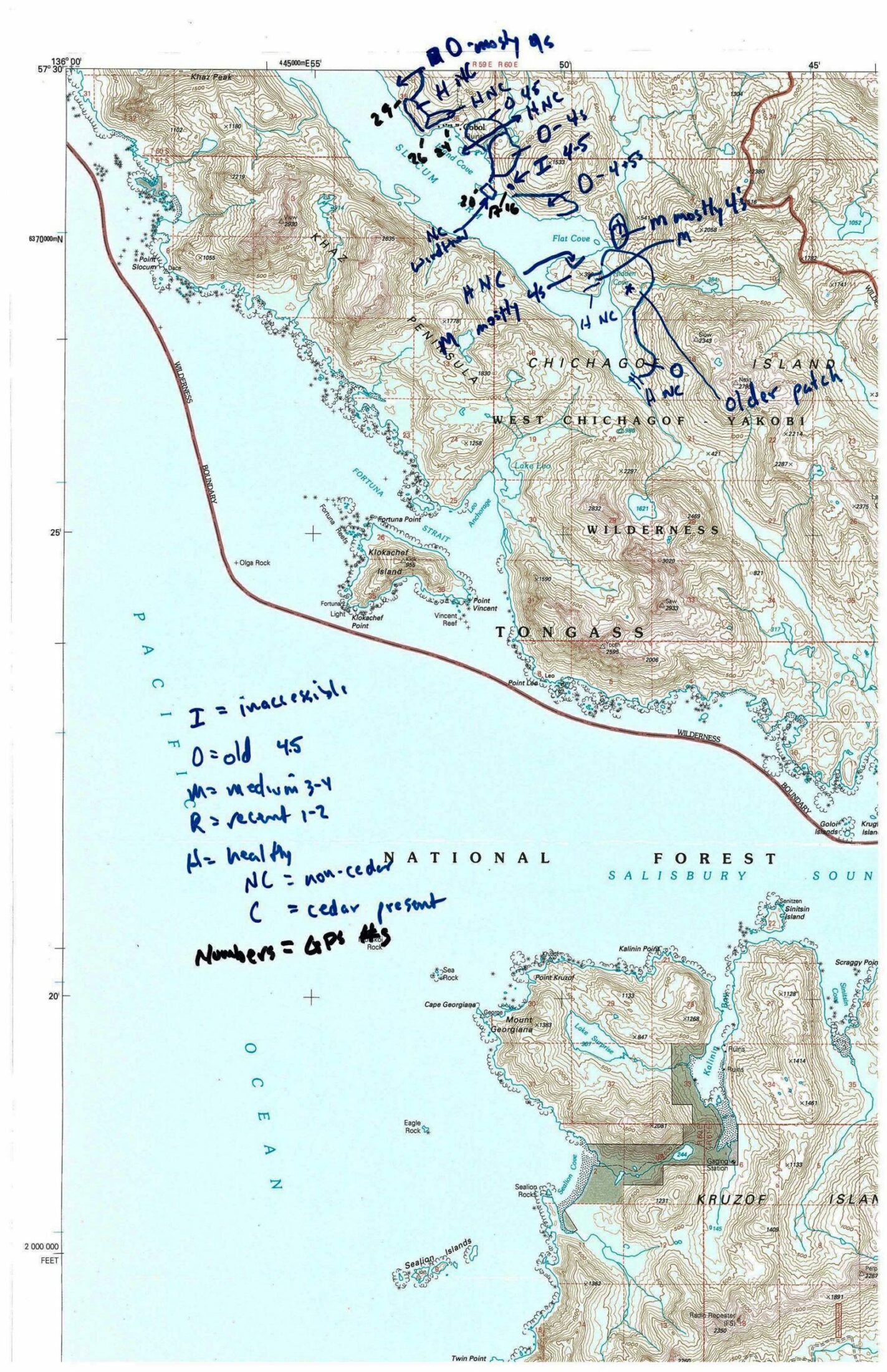
Greg’s lingering question sent me on a binge of atypical reading for an ecologist in the midst of an all-consuming, six-year study on the consequences of climate change in remote forests and communities. I found myself digging through online resources for philosophy papers on the distinction between an object and a subject, then reading about trees ordained as monks in Cambodia and the accumulation of souls in trees in Australia. Seeing trees as sentient beings was in marked contrast to the ecological view of woody, perennial plants.
The subject is the observer, I read; the object, the observed. That seemed straightforward to me. With a clear delineation made between the two, the observer could use some means of acquiring knowledge from the observed (the scientific method, in my case). In the forests I’d visited, indeed, my job was systematic observation. Encounter understory plant or tree in the canopy; note species and height and diameter; categorize as live, dead, or stressed; and so on. Repeat, observation after observation, across thousands of trees until a pattern emerges in a reproducible act of discovery. I dedicated full attention to every tree, but only for long enough to record what the research required. The demands of data collection and the challenges of steady rain left little room for more.
7-12-11 [field notes]
very productive site + sun…
felt really sluggish today
frustrated by my lack of energy
8-3-11, Plot 28 [data record]
Tree # 1796 – spp. YC – 27.0 diameter – 15.31 top ht. – live – stressed – 5.62 base of live crown – 30% live crown remaining – 20% flagging
Tree # 1797 – spp. YC – 28.8 diameter – 14.56 top ht. – dead
Saplings – spp. SS, 6; WH [western hemlock], 14, no YC observed
Standing at the beginning of modern philosophy, Descartes, I learned in my reading, brought in the ego—the subject as something that thinks, perceives, judges, agrees, disagrees, loves, hates, and strives. I remember acknowledging that plants do, in fact, perceive. A tree is aware of its environment and the changes occurring within it. Plant or human, life is striving; we are all strivers. But love? This is a feeling I’d come to hold for trees, and one they do not know.
As I jumped through time periods and disparate schools of thought, I found another distinction between subjective and objective perceptions of reality. Is truth subjective, objective, or, perhaps, a construct of these two coexisting perspectives?3 Thomas Nagel, a contemporary American philosopher, wrote, “There is always room for improvement in our objective understanding of things, naturally, but the proposal I am considering is not that the objective picture is incomplete, but rather that it is in essence only partial.”4
“Partial,” I whispered, as I highlighted the words. “The objective picture is incomplete,” I repeated aloud. My scientific lens on the forest could provide one view through the reproducible methods I value, but I also remember thinking that I was learning from more than what I measured. I wanted to allow my own meaning to exist alongside the science, to encourage my own acceptance of the threats of climate change in my life, and to reconcile what I can and cannot do alone. Could a live yellow-cedar be a subject beside me, the two of us as members of a warming world, perceiving the threats and striving for survival?
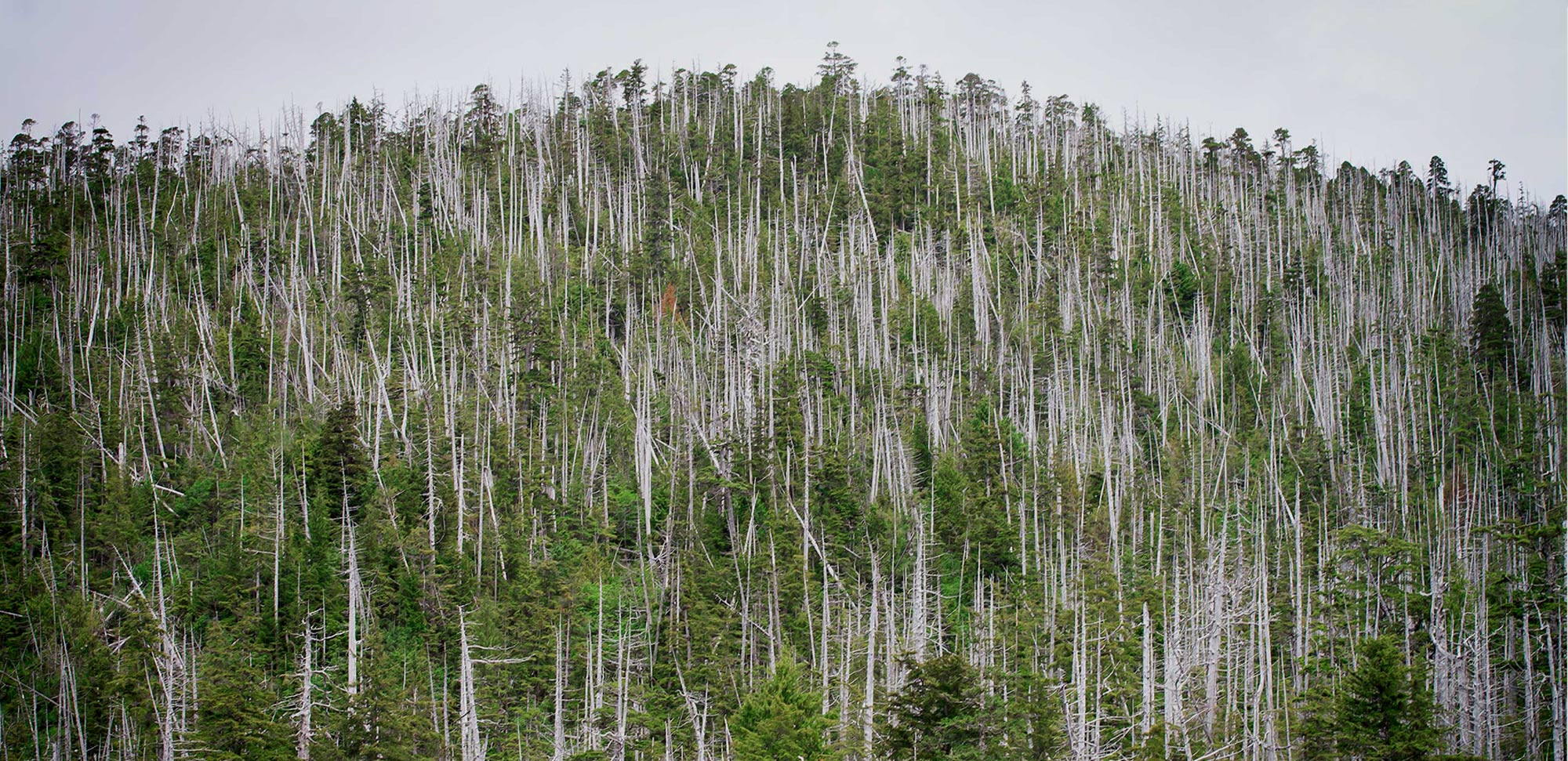
Three forests with yellow-cedar trees remain prominent in my memory. My experiences in them are dispersed across many years of coming and going from Alaska, of returning to the outer coast of the archipelago. This is the yellow-cedar tree, to me, in memory across time.
First, the dead:
The colossal yellow-cedar tree above me is leafless and branchless, exposed and ghostly, with its bark lost to decay. Here in this forest of green and gray, enough years have passed since the warming took its toll for decomposition to set in. The early signs—the once reddish, then brown foliage of alarm—are long gone.
On the data sheet, we classify the tree as another “dead,” as opposed to live or stressed. Dead yellow-cedar after dead yellow-cedar leads up to this one above me; to the scientist seeking patterns, it is technically just another individual for a series of observations. Pronouncing “dead” is what’s required when we work. But the clinical remove feels unnatural to me, even disrespectful of the hundreds of years of life—thousands, in some cases—ended by the far-reaching effects of human activity. In my journal, I begin to describe the dead trees as “skeletons”; in my mind, each bole becomes a body.
8-04-11 [field notes]
…I sense loss—what once was there,
what might have been,
which species won out and which did not,
what we miss
no longer there.
8-05-11 [field notes]
this is just hard, everything about this time right now—hard.
I extend my arms to embrace the yellow-cedar, not intentionally to hug it but to measure its diameter. Given the tree’s girth, it takes two of us to wrangle the tape for an accurate reading. High above, the space where its lush crown once extended is now filled with the needles of another conifer. Rooted alongside the dead, this one wraps its branches up and around the barren trunk. Ecologically, I know the process that the patterns from my observations will later reveal about this pairing of live and dead. As a yellow-cedar tree dies, the canopy opens. Light reaches the forest floor. Other conifers, such as spruce and hemlock, regenerate. Shrubs and blueberry brush blossom below the standing dead. There are species taking advantage of the new resources and the changing conditions.5 But this is also where sharing only scientific results feels limiting. As a scientist, I can speak to the sample frame and generalize to forests across miles of coastline. But as another life in this forest, riding out a world in flux, I want a lesson that scales for humanity.
Seeing trees as sentient beings was in marked contrast to the ecological view of woody, perennial plants.
In 1990 the author and activist Michael Pollan wrote, “Science has also begun to regard trees as barometers of our environmental health. Ecologists think the greenhouse effect will show up first in the forests, where cool-weather species, unable to migrate northward fast enough to keep pace with a warming climate, may soon begin to sicken and die.”
Some twenty years later, the centuries-old trees surrounding me offer their testimony. Barren trunks in a sea of green and ice sheets, melting—the harbingers of a tipping point.
“Trees,” Pollan continued, “are like the canaries miners used to carry into the coal mines; since the birds succumbed to poisonous gases long before humans did, they warned miners of unseen dangers.”6 I know what killed this yellow-cedar above me, as I know what killed all the others. And I know the same crisis threatens me, my family, and all of humanity. I am standing beneath one species that is dying amidst change, and it’s next to another species that somehow endures the same conditions. How can I not think about which one our species will be? What life will we lose? What will live on?
Second, the sapling:
I am cold and wet, my fingers wrinkled and worn. Day after day, waking up to rain on the tent, paddling across the inlet to touch shore and hike to another location and measure more trees, I am tired. I cannot recall how much scrambling over downfall was required that morning. All I remember today is the sapling: a basil-colored feather of foliage, soft and bowed, like a songbird’s plume poking into the earth.
There, at first sight of it, I drop to my hands and knees to confirm that it is, indeed, a yellow-cedar, which, of course, it is. I am stunned. I collapse in amazement.
Object? No. Community member? Yes. We are living out the same consequences of climate chaos. There—in that forest, on this planet—we are both youth amidst antiquity, life amidst death, young individuals striving against all odds. Tell me, little one, what else is there to do but to fight for our future?
Finally, the third forest, in arcs of ancients still flourishing:
After two summers of making observations about dead and dying trees, I am hunting for a verdant grove, only to witness a mystery. They are trees of local lore, passed to me by word of mouth out of reverence for their growth and persistence. I hold their location in my hand as coordinates on a GPS device. I hold the legendary stand in my mind as a fairy tale, as I push through thick blueberry brush and stop to snack on a few plump berries. I traipse for a while in one direction, confronting whatever obstacles I encounter along the way. I wander with more ease on game trails, then start feeling lost and off course.
Pushing through the Vaccinium and Menziesia, I enter a muskeg and pause in the more open, boggy landscape. My eye catches the red rosette of a sundew at my feet, Drosera rotundifolia, the tiny blushing carnivore, there just waiting. Its tentacles glisten, sticky and wet, and extend in what I know as patience and anticipation. In the distance, I see the edges of a forest and scan its profile. I am searching for a particular shade of green foliage in the trees and the swooping shape of a crown specific to the conifer I know best.
I once read an article about plant blindness, a term coined by a pair of botanists and biology educators. The phenomenon was defined in various ways: the inability to see or notice plants in one’s environment, the inability to recognize the importance of plants in the biosphere and in human affairs, and the misguided ranking of plants as inferior to animals and, thus, unworthy of consideration.7 There, in that muskeg, moving toward the live yellow-cedars through hemlocks and pines, I test my vision repeatedly by trying to identify individual after individual. Coptis asplenifolia, or fernleaf goldthread—clustered together, trapping moisture in the ground. I count the segments of one plant, doubt myself for a moment, thinking of Coptis trifolia, threeleaf goldthread. Some species I recall instinctively, like the names of familiar friends: skunk cabbage, Lysichiton americanus. Others I struggle to summon, as first or forgotten encounters. Every step is a recognition of knowing and not knowing, curiosity and continual effort required; I am always learning to see.
At last, after traipsing across the soggy muskeg, I reach the amphitheater of titans. Soft foliage trails from limbs like peacock trains fanning above and around me. These are the distinct yellow-cedars that I could see from afar. Their familiar aroma seeps into my everything like the smell of smoke from a fire. Objects? No. The subjects of a study? No. I measure nothing here at all. They are my teachers, offering an unexpected lesson on survival. The reason for their persistent thriving is unknown, the cause immeasurable and undecipherable to date.
8-29-17 [field notes]
These trees—lucky to be standing where they happen to be—the survivors. Long-lived, the change they’ve witnessed. They survived the ice coming and going. They are surviving, today, the warming world. Why?
I don’t need to know why. What I know is, these trees in this grove are a testament to the ability to inhabit conditions thought to be uninhabitable. They have found a way. Will we, too? This is the question I face every morning; this is the plaguing one for us all.
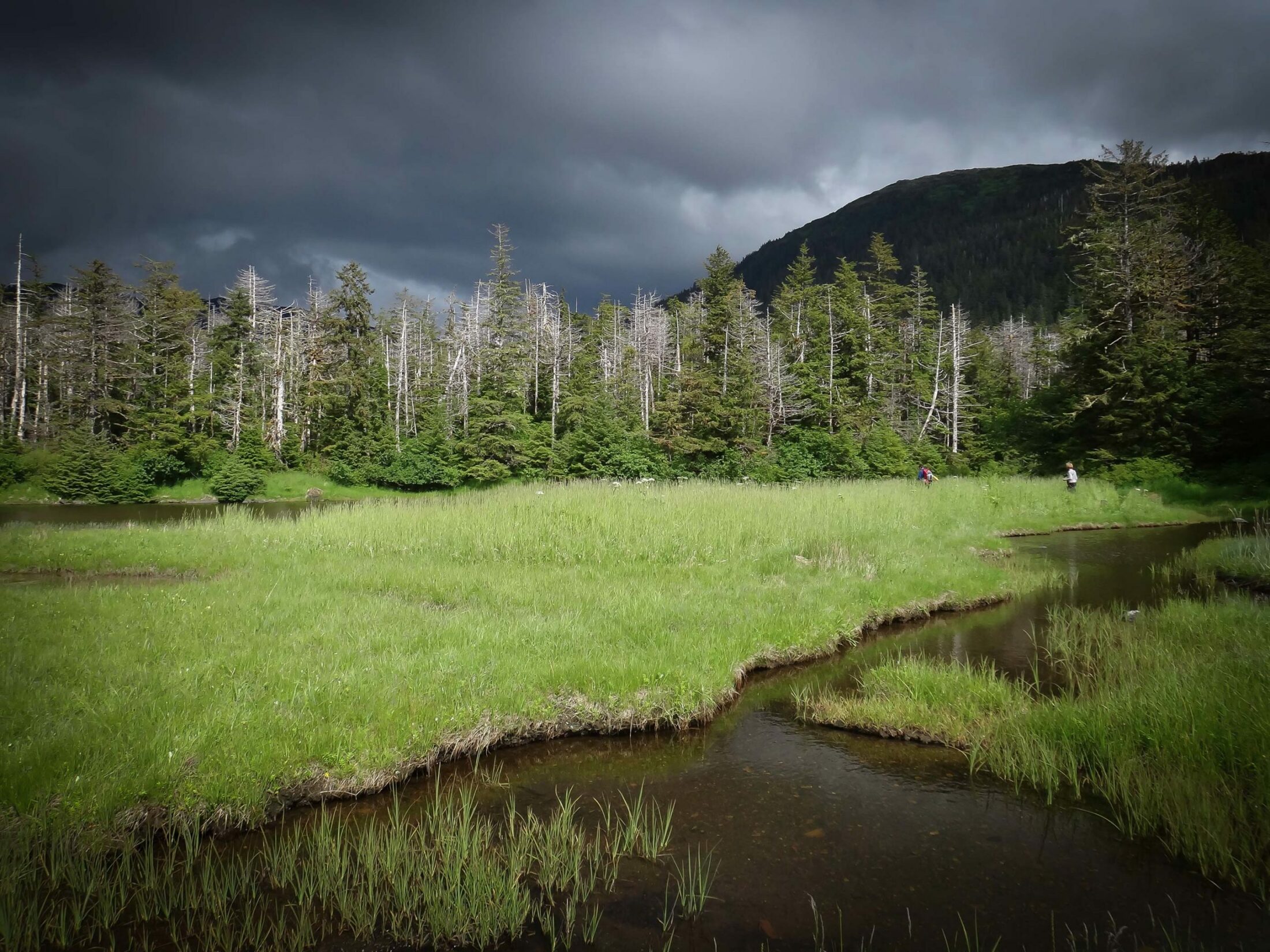
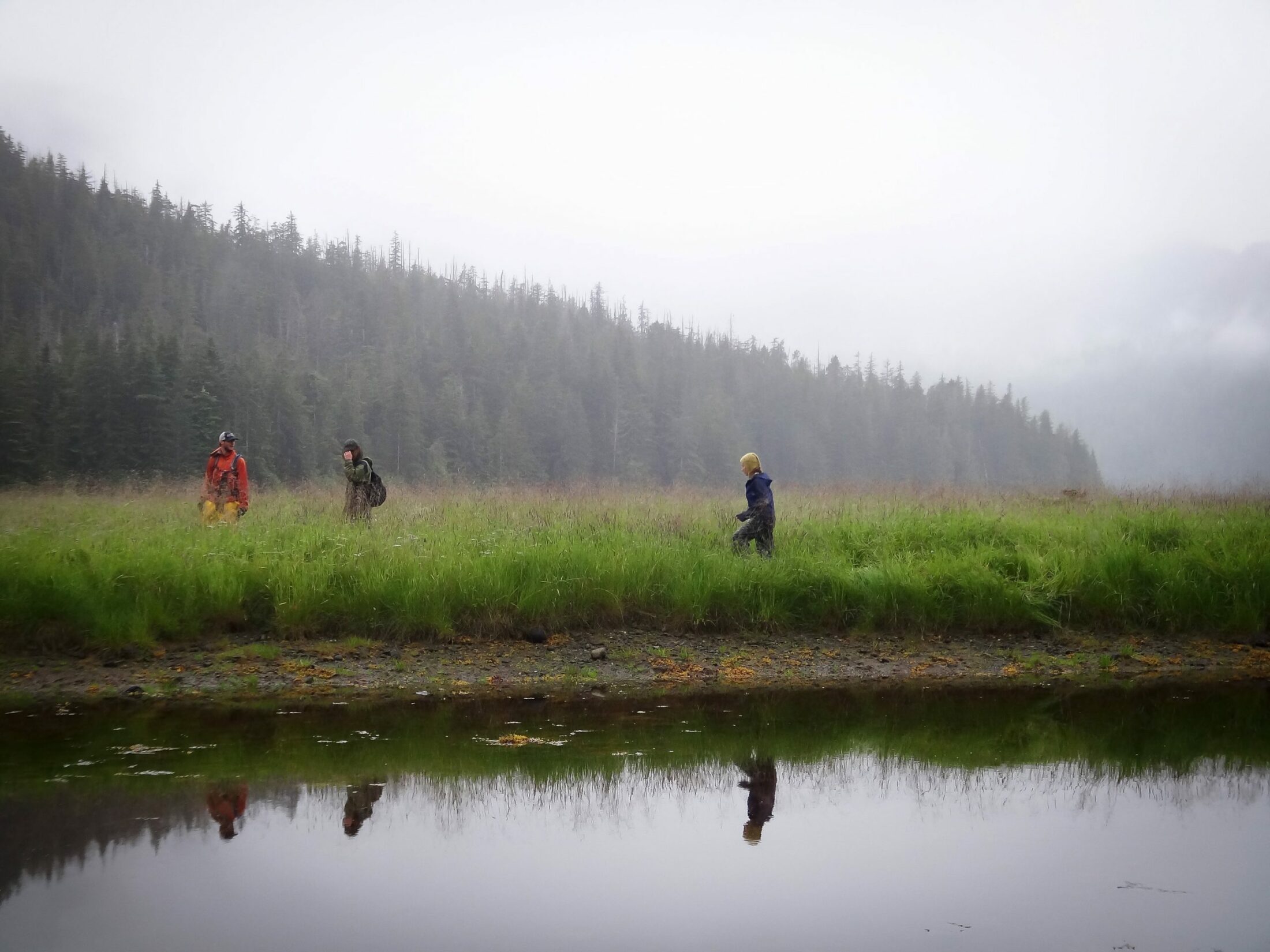
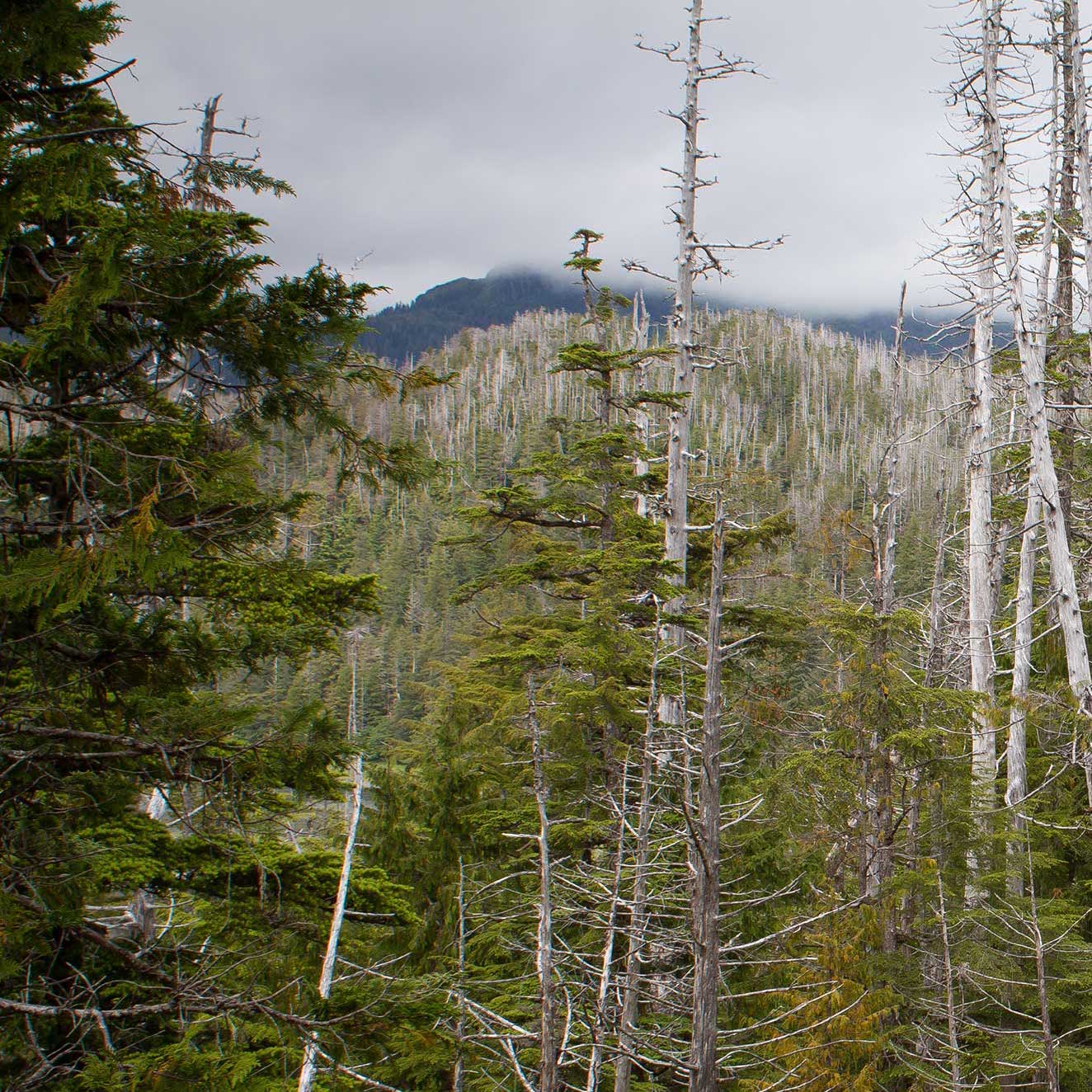
I never did write Greg Streveler to tell him where I landed on my relationship with the yellow-cedars over the years, and I think that’s because I still carry his question with me into every forest I have visited since. Forests of ancient yews in England, Monterey pines in California, aspens in Colorado, Engelmann spruce and lodgepole pine not far from my home in Montana. These are just a few.
What I read long ago distinguished object from subject in different ways; I think I, too, wanted a definitive answer. Now I know this: I can measure the trees to find patterns and uncover scientific answers, but I cannot ignore the disturbing sense that develops over time in forest after forest. Concern for mutual survival is innate.
Sometimes in the presence of trees, I try to appreciate their beauty without wondering about their future. I fail, repeatedly. There is an element of passion and heart in any research I do today, and I think that is what this warming world requires. It doesn’t make me biased; it makes me human. Time is ticking away.

Recently I took my fourteen-month-old son to Three Rivers, California, a tiny town on the edge of Sequoia National Park. I was traveling to talk about climate change in the community and also to meet with researchers. Even at my son’s age, when memory of experience is unlikely, I wanted him to see some of the world’s largest remaining trees. I wanted to witness his response.
Dr. Nate Stephenson drove me up the mountain that early morning and guided a walk with colleagues. He met us early while my mom watched over my son. Nate was dressed in two synthetic collared shirts, one over the other, tucked into his synthetic pants. The double collar looked strange to me at first; then I chuckled to myself, thinking of Greg’s uniform, the wool layers perfected to local conditions only by experience. I assumed the extra shirt beneath was short-sleeved in preparation for the afternoon heat (and it was). A simple online search about Nate’s work reveals about seventy scientific publications in top journals with thousands of citations. His forty years of research are rooted, like Greg’s, in place.
In the car, I listened to his debriefing on drought, fire risk, and beetle infestations with the park’s chief of resource management and science. I couldn’t help but think that the future was here already; if the north was once the front lines of climate change to me, and Callitropsis nootkatensis a species with a seemingly unique vulnerability, here I was—years later and thousands of miles away—living it all again. And more.
“Twenty-eight monarchs,” Nate reported. Christy, the chief, confirmed. They were referring to the death toll for giant sequoias, the goliaths of the Cupressaceae family, the same family of the distant yellow-cedar. Relative to the population, the count was a small number. But when considered alongside the patterns for many other species in the Sierra Nevada, the unusual deaths of one of the longest-living organisms on Earth were another red flag.
“Everyone wants to know what will happen to the sequoias,” Christy said. From the Grand Canyon to the Mojave, the Olympic Mountains, and the Sierra, our monuments are the deepest canyons, the most rugged deserts and peaks, and the biggest trees. “We’re also a UNESCO biosphere reserve,” she added. “These trees belong to the world.”
“People come in search of the big trees,” Nate chimed in. “They often drive this road not noticing the dead oaks that we just passed, or the views of dead ponderosas higher up.” Even I had to contain my excitement for the sequoias and remind myself to slow down, to focus, to see.
“Plant blindness,” Christy noted from the back seat—not in a critical tone, I thought, but a hopeful one, as if there were still work to be done and opportunities to tackle the problems at hand. They were worried about fire.
We parked up high and walked out on a granite dome overlooking the Sierra foothills. We were standing on Beetle Rock, named for the Trachykele opulenta, a wood-boring beetle discovered there over a century ago. Nate was carrying a folder of academic articles; he pulled out one of the latest to show me the figures of dead trees: white fir, sugar pine, ponderosa pine, black oak, incense-cedar.8 Drought, he explained, exacerbated stresses the trees were already experiencing, and increased stress made the trees more vulnerable to beetle attack.
“I bet most people stand here and appreciate the view,” Nate said. It was, indeed, a stunning vista—granite beneath me, foothills fading into the horizon, forest blanketing everything in between. “Look at all those trees!” he declared in celebration, as if it were his first time there.
He pointed to the hillside stretching across another valley, and I could see dead trees, standing without needles, and others, still alive, with foliage reddened in stress. “The sugar pines were victims of bark beetle outbreaks triggered by the drought. About 70 percent loss of big sugar pines in that area. That’s what I see.”
Nate later wrote me about the Jeffrey pines that once seemed to grow straight out of the rock. “In the glaring, summer sun they provided little islands of shadow to sit under for lunch,” he noted, “and it was also fun to just marvel at how they could survive and seemingly thrive with their roots sunk into tight cracks in the otherwise inhospitable granite.” Those pines had died during the recent drought. “Besides being sad at their passing,” he added, “I really noticed the loss of the little patches of welcoming shade.”
Standing on Beetle Rock for the first time, looking out at those stressed and dead and dying trees and thinking about the future, I had no way of knowing what lives had stood there long before me. My perception of that day’s “normal” was far from Nate’s normal, and my son’s normal would be another huge leap. I still don’t know what and when and how I will tell my boy about what once was and what may come.
If there was a moment when I was fully present with giants, coexisting in reverence and thinking of nothing in this troubled, warming world, it was when I stood under the sequoias with my mother and my son. Three generations of humanity, a spec in time against the millennia of massive trees. “Whoaaaa,” was what my son exclaimed, pointing upward in elation, then falling silent to wonder. I stood him on the ground beside a trunk; he touched its bark and craned his neck so far, I thought he would topple over. Awe, I thought, is instinctual. When I told Christy about my boy’s reaction, she said those trees are the Lorax for all the others.
There are twenty-eight dead monarchs, today, speaking for the trees and for humanity, sharing their warning. But there are also many others offering a secret for survival.
Back home in Montana, I read through the stack of papers Nate had handed me before we parted. I gravitated toward one in particular: a study that deciphered why so few giant sequoias, in comparison with other conifers, had died during the drought. When Nate and his colleagues investigated further, they found variations in site conditions between the dead and living monarchs, meaning that some individuals could be affected by drought more than others based on where they rooted. But the survivors were also doing something distinctly different. Those trees were restricting water use, working to redistribute water, and building tougher and more drought-resistant foliage.9
I thought about the many ways in which trees send signals to one another through an array of chemical and hormonal responses. If the trees were communicating, as trees do, they were certainly not wasting any time debating about what was happening to their world or what, if anything, they should do. They were aware of the changes occurring, perhaps even preparing for more to come. They were responding to the impacts, trying something new, and investing everything possible in survival.
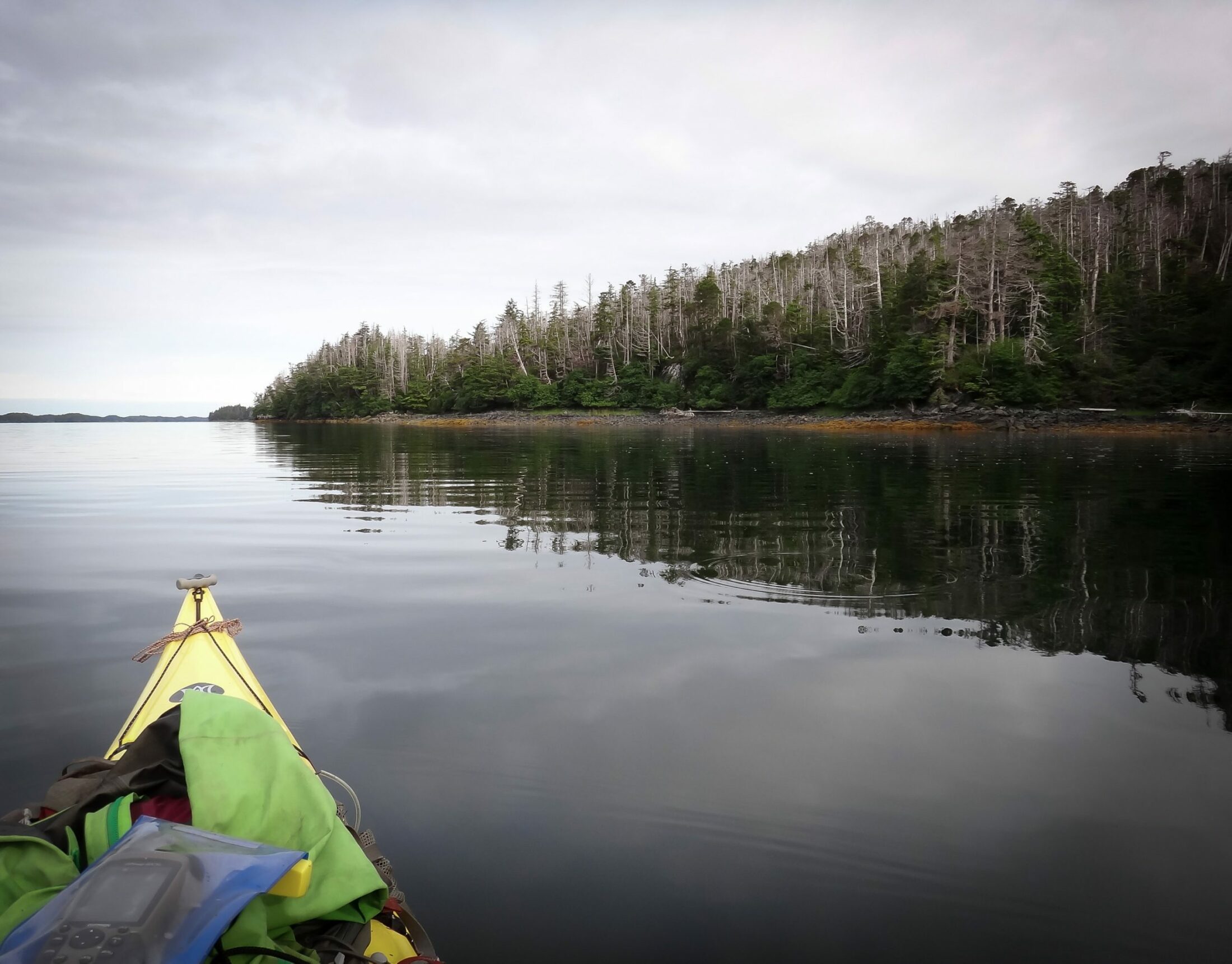
- The epigraph is from The Book of Questions, copyright 1974 by Pablo Neruda and the Heirs of Pablo Neruda, translation copyright 1991, 2001 by William O’Daly. Used by permission of Copper Canyon Press, www.coppercanyonpress.org.
- Parts of this essay are adapted from Lauren E. Oakes’s, In Search of the Canary Tree: The Story of a Science, a Cypress, and Changing World (New York: Basic Books, 2018).
- Anita Avramides discusses Thomas Nagel’s explorations of objective and subjective points of view and the coexistence of both in the construction of truth in “Thomas Nagel: The View From Nowhere,” a chapter in The Twentieth Century: Quine and After (Central Works of Philosophy, Vol. 5), McGill–Queen’s University Press, 2006.
- Thomas Nagel, “Subjective and Objective,” in Mortal Questions (Cambridge: Cambridge University Press, 2012), 196–213.
- This research was later published in the peer-reviewed literature: Lauren E. Oakes et al., “Long-Term Vegetation Changes in a Temperate Forest Impacted by Climate Change.” Ecosphere 5, no. 10 (October 2014): 1–28, https://doi.org/10.1890/ES14-00225.1.
- Michael Pollan, “Putting Down Roots,” the New York Times Magazine, May 6, 1990, https://www.nytimes.com/1990/05/06/magazine/putting-down-roots.html.
- James H. Wandersee and Elisabeth E. Schussler, “Preventing Plant Blindness,” The American Biology Teacher 61, no. 2 (February 1999): 82–86, https://doi.org/10.2307/4450624.
- Nathan L. Stephenson et al., “Which Trees Die During Drought? The Key Role of Insect Host‐Tree Selection,” Journal of Ecology 107, no. 5 (September 2019): 2383–2401, https://doi.org/10.1111/1365-2745.13176.
- Anthony R. Ambrose et al., “Leaf- and Crown-Level Adjustments Help Giant Sequoias Maintain Favorable Water Status During Severe Drought,” Forest Ecology and Management 419–420 (July 1, 2018): 257–267, https://doi.org/10.1016/j.foreco.2018.01.012.

